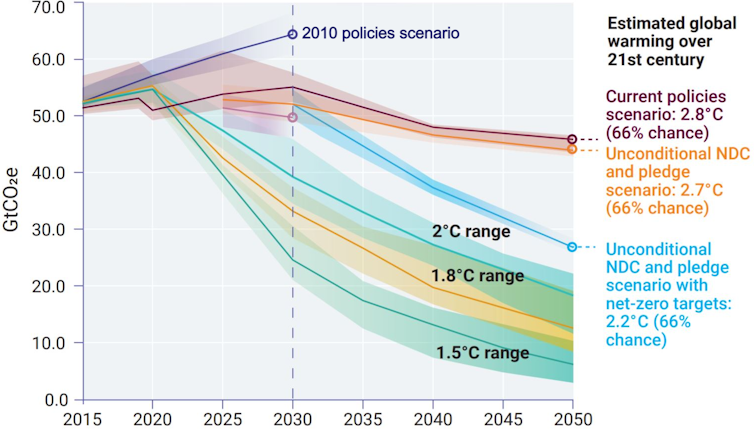
Experts in autocracies have pointed out that it is, unfortunately, easy to slip into normalizing the tyrant, hence it is important to hang on to outrage. These incidents which seem to call for the efforts of the Greek Furies (Erinyes) to come and deal with them will, I hope, help with that. As a reminder, though no one really knows how many there were supposed to be, the three names we have are Alecto, Megaera, and Tisiphone. These roughly translate as “unceasing,” “grudging,” and “vengeful destruction.”
Today, COP26 (“Conference of the Parties” number 26) begins in Glasgow, Scotland. I am guessing that people who read this blog know a lot more about climate science than the average bear – “average bears” like the Senator who brought a snowball to the Senate floor to “prove” climate change was a hoax, for instance.) But that doesn’t necessarily mean we know every detail of what is and isn’t being done in every nation, nor how those efforts are and are not succeeding. Well, we are about to find out.
================================================================
4 key issues to watch as world leaders prepare for the Glasgow climate summit

Jeff J Mitchell/Getty Images
Glasgow sits proudly on the banks of the river Clyde, once the heart of Scotland’s industrial glory and now a launchpad for its green energy transition. It’s a fitting host for the United Nations’ climate conference, COP26, where world leaders will be discussing how their countries will reduce the greenhouse gas emissions that are driving climate change.
I’ve been involved in climate negotiations for several years as a former senior U.N. official and will be in Glasgow for the talks starting Oct. 31, 2021. As negotiations get underway, here’s what to watch for.
Ambition
At the Paris climate conference in 2015, countries agreed to work to keep global warming well below 2 degrees Celsius (3.6 Fahrenheit), aiming for 1.5 C (2.7 F). If COP21 in Paris was the agreement on a destination, COP26 is the review of itineraries and course adjustments.
The bad news is that countries aren’t on track. They were required this year to submit new action plans – known as national determined contributions, or NDCs. The U.N.’s latest tally of all the revised plans submitted in advance of the Glasgow summit puts the world on a trajectory to warm 2.7 C (4.86 F), well into dangerous levels of climate change, by the end of this century.

UNEP
All eyes are on the G-20, a group of leading world economies that together account for almost 80% of global emissions. Their annual summit takes place in Rome on Oct. 30-31, immediately before COP26 begins.
Some key G-20 countries have not submitted their updated plans yet, including India. Brazil, Mexico, Australia and Russia have filed plans that are not in line with the Paris Agreement.
Details of how China will achieve its climate goals are now emerging, and the world is poring over them to see how China will strengthen its 2030 emissions reduction target, which currently involves cutting emissions 65% per unit of gross domestic product, moving up the date when the country’s emissions growth will peak, and setting industrial production targets for other greenhouse gases, such as methane.
A delicate dance between the United States and China, and deft diplomacy by France, was critical to reaching the Paris climate agreement in 2015. Six years later, a growing rivalry threatens to spiral down what had been a race to the top.
Meanwhile the world’s eyes are on the United States. Opposition from two Democratic senators, Joe Manchin of West Virginia and Kyrsten Sinema of Arizona, appears likely to force the Biden administration to scrap a plan that would have incentivized utilities to switch to cleaner power sources faster. If their planetary brinksmanship guts that key part of President Joe Biden’s Plan A for how the U.S. will reach its 2030 emissions targets, the world will want to see details of Plans B, C or D in Glasgow.
Carbon markets
One leftover task from the Paris conference is to set rules for carbon markets, particularly how countries can trade carbon credits with each other, or between a country and a private company.
Regulated carbon markets exist from the European Union to China, and voluntary markets are spurring both optimism and concern. Rules are needed to ensure that carbon markets actually drive down emissions and provide revenue for developing countries to protect their resources. Get it right and carbon markets can speed the transition to net zero. Done badly, greenwashing will undermine confidence in pledges made by governments and companies alike.
Another task is determining how countries measure and report their emissions reductions and how transparent they are with one another. This too is fundamental to beating back greenwashing.
Also, expect to see pressure for countries to come back in a year or two with better plans for reducing emissions and reports of concrete progress.
Climate finance
Underpinning progress on all issues is the question of finance.
Developing countries need help to grow green and adapt to climate change, and they are frustrated that that help has been on a slow drip feed. In 2009 and again in 2015, wealthy countries agreed to provide $100 billion a year in climate finance for developing nations by 2020, but they haven’t reached that goal yet.
With one week to go, the U.K. revealed a climate finance plan, brokered by Germany and Canada, that would establish a process for counting and agreeing on what counts in the $100 billion, but it will take until 2023 to reach that figure.
On the one hand it is progress, but it will feel begrudging to developing countries whose costs of adaptation now must be met as the global costs of climate impacts rise, including from heat waves, wildfires, floods and intensifying hurricanes, cyclones and typhoons. Just as with the global vaccine rollout, the developing world may wonder whether they are being slow-walked into a new economic divergence, where the rich will get richer and the poor poorer.
Beyond the costs of mitigation and adaptation is the question of loss and damage – the innocuous term for the harm experienced by countries that did little to contribute to climate change in the past and the responsibility of countries that brought on the climate emergency with their historic emissions. These difficult negotiations will move closer to center stage as the losses increase.
Public climate finance provided by countries can also play another role through its potential to leverage the trillions of dollars needed to invest in transitions to clean energy and greener growth. Expect big pledges from private sources of finance – pension funds, insurance companies, banks and philanthropies – with their own net zero plans, including ending finance and investments in fossil fuel projects, and financing critical efforts to speed progress.
It’s raining pledges
A cross section of the world will be in Glasgow for the conference, and they will be talking about pathways for reducing global carbon emissions to net zero and building greater resilience.
From emissions-free shipping to aviation, from ending coal financing to green steel and cement, from platforms to reduce methane, to nature-based solutions, the two-week conference and days leading up to it will see a steady stream of commitments and new groups of countries, nongovernmental organizations and businesses working together.
Keeping track and verifying achievements toward these pledges will be critical coming away from COP26. Without that, climate activist Greta Thunberg’s “blah blah blah” speech thrown at delegates to a pre-COP meeting in Milan a few weeks ago will continue to echo around the world.
[Over 110,000 readers rely on The Conversation’s newsletter to understand the world. Sign up today.]
This article was updated Oct. 26 with the release of the UNEP Emissions Gap report and trajectories chart.![]()
Rachel Kyte, Dean of the Fletcher School, Tufts University
This article is republished from The Conversation under a Creative Commons license. Read the original article.
================================================================
Alecto, Megaera, and Tisiphone, I couldn’t help but look at that map and wonder, “WTF is up with Mongolia?” I did see a different version of the map in which Mongolia was a much lighter shade, but I don’t know which is correct. However, that is probably the least of our worries at this point. I will be doing my best to cover COP26 at least lightly and still covering other things that may come up. Be sure to check the video threads for climate news as well.
The Furies and I will be back.
4 Responses to “Everyday Erinyes #290”
Sorry, the comment form is closed at this time.

Comment from Mitch:
“Blah, blah, blah” has gotten us, some of us, to feel the blahs. Stephen Hawking’s warning still resounds in my head. Manchin, Sinema, and their ilk need to be boiled alive, in today’s witches’ cauldrons.
Mitch
Glad you have the Halloween spirit Mitch!
Thanks Joanne-the data is truly dire. Me, I figure Maloney getting corporate supoenas on the documents the oil company CEOs did not produce for last week’s hearing will make a bigger difference than the reconciliation negotiations will at this point.
No one bothers assessing CA’s carbon credits any more since no change in our emissions is attributed to them. Tax credits, utility and other incentives (battery lawn mowers, etc.) are helping more. Expansion and system integrations of public transportation, carpools, employers getting benefits for making that work for their staff, etc. were making a difference in reducing gridlock emissions, etc. only now the data is showing the rise of Lyft and Uber has neutralized those differences.
CA’s delegation will be led by Lt. Gov–Governor will now participate remotely. Some things recently passed should help, yet like my views on Biden–it is all too little, too late.
Our Aussie PM was off with a sack of lies and empty promises for 2050 for f&*@ sake. Lies on how much his government was already doing towards climate change which in fact is all down to what the states and territories and individuals have done. Empty promises because they are based on a plan that was thrown together only last week behind closed doors without treasury running the numbers and details are still not available to us Aussies.
So, do I believe governments are finally close ranks and seriously start doing something about climate change?